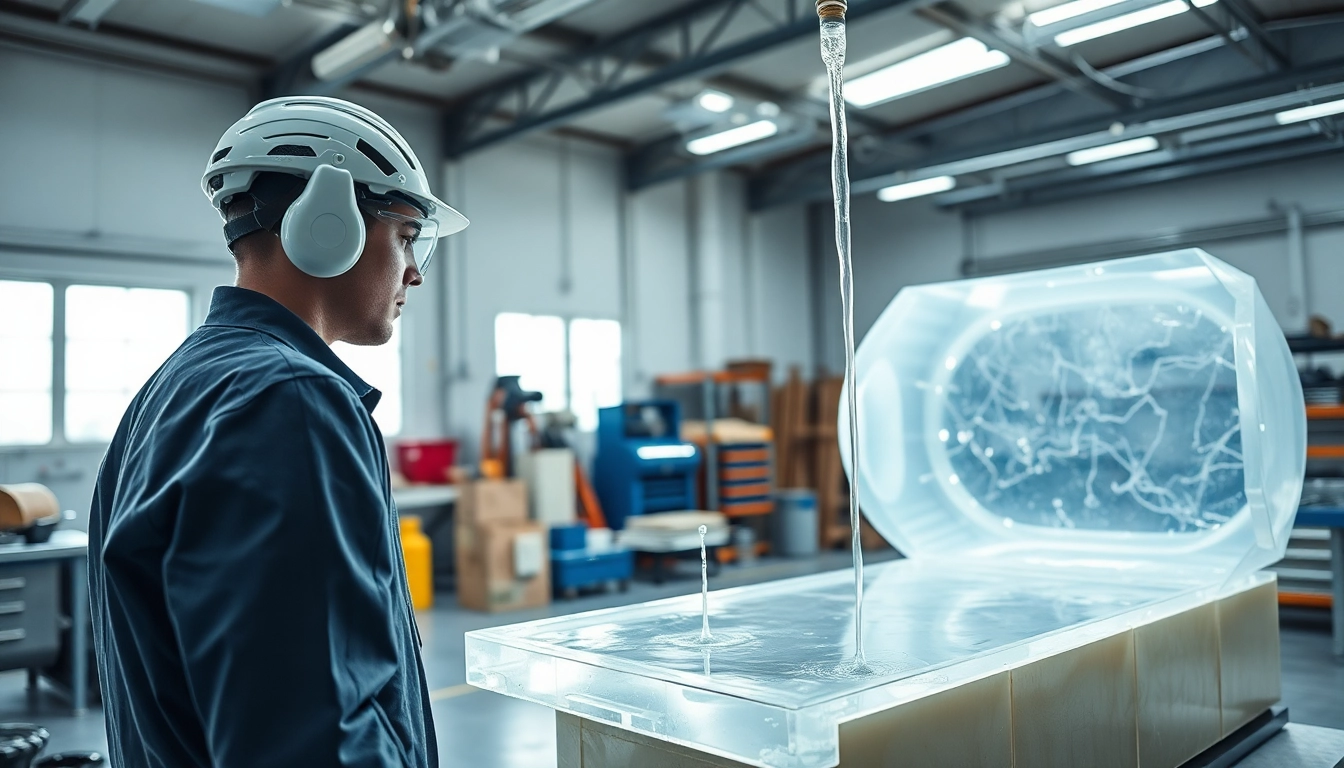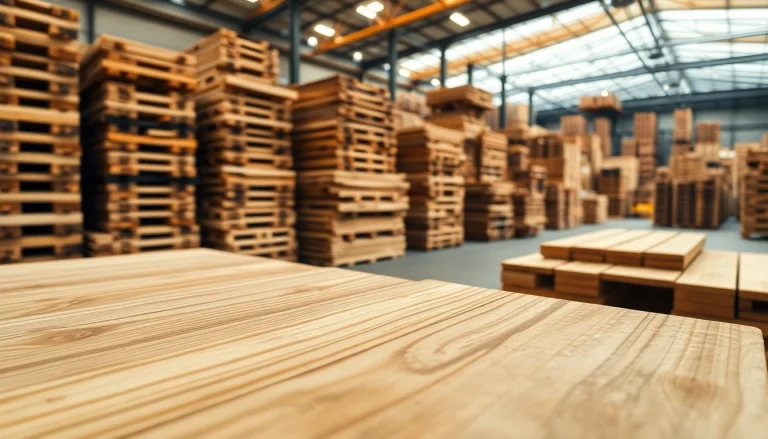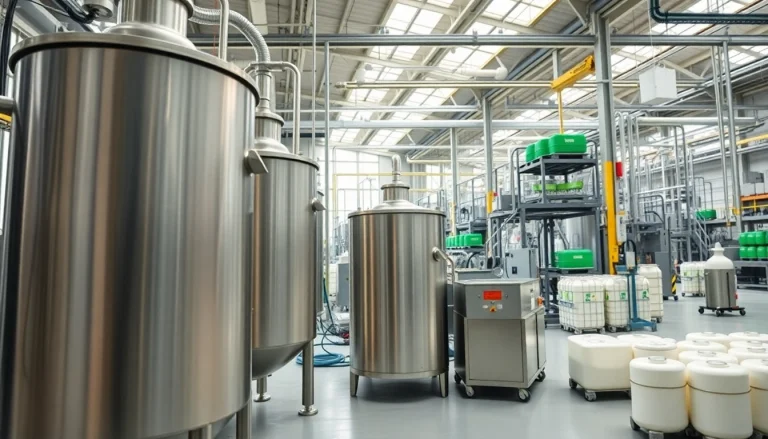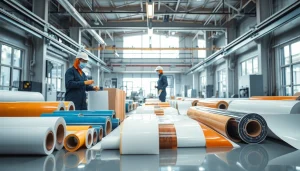Understanding Infusion Resins
Definition and Properties
Infusion resins are specialized polymer materials used primarily in composite manufacturing processes, notably for creating lightweight, strong structures. This process typically involves vacuum bagging, where air is removed from a part to allow the resin to flow through the fiber reinforcement, ensuring thorough impregnation and minimal voids. The result is a high-performance laminate that offers outstanding mechanical properties.
These resins exhibit low viscosity, which is crucial as it allows for the effective flow of the resin through the fibrous materials without trapping air bubbles. Additionally, infusion resins are designed to cure at room temperature or at elevated temperatures, depending on the specific formulation. Their properties, including clarity, strength, and chemical resistance, can be optimized for different applications, making them a versatile option in the composite materials market. For more information on various types of infusion resins, check out infusion resins.
Applications of Infusion Resins
Infusion resins have a broad range of applications across various industries due to their excellent mechanical properties and versatility. They are widely used in:
- Aerospace: Used in the manufacturing of lightweight yet durable components such as wings, fuselages, and interior structures.
- Automotive: Employed for producing lightweight parts that improve fuel efficiency and performance while maintaining crash safety standards.
- Marine: Integral to constructing boats and yachts, where strength and moisture resistance are paramount.
- Wind Energy: Vital in fabricating large wind turbine blades, providing the necessary structural integrity against dynamic loads.
- Consumer Goods: Utilized in sports equipment and other products requiring high strength-to-weight ratios.
Benefits of Using Infusion Resins
The use of infusion resins in composite manufacturing offers several significant benefits:
- Improved Mechanical Properties: Infusion resins create composites that exhibit enhanced tensile strength, stiffness, and impact resistance, vital for structural applications.
- Reducing Waste: These resins typically allow for precise dosages of material, minimizing excess and optimizing production efficiency.
- Enhanced Surface Finish: The infusion process can yield smoother surfaces, which is particularly desirable for exposed aesthetic parts.
- Controlled Resin Flow: The infusion technique allows for better control over the resin flow, helping to prevent issues such as dry spots and ensuring even saturation of the fibers.
- Less VOC Emission: Many modern infusion resins are formulated to reduce volatile organic compound (VOC) emissions, making them more environmentally friendly.
Types of Infusion Resins
Epoxy Infusion Resins
Epoxy infusion resins are renowned for their superior adhesion, durability, and chemical resistance. These resins cure at room or elevated temperatures, depending on the hardener used. They are ideal for applications requiring high strength, such as aerospace and automotive components. They tend to be more expensive than other resin types but offer the best performance characteristics.
Polyester Infusion Resins
Polyester resins are widely employed due to their cost-effectiveness and ease of use. While they may not match the mechanical performance of epoxy resins, they cure quickly and are suitable for large production volumes. Polyester is often used in marine applications and automotive parts, where weights and costs are critical considerations.
Vinyl Ester Infusion Resins
Vinyl ester resins combine the benefits of both epoxy and polyester resins, providing improved mechanical properties compared to polyester while being more cost-effective than epoxy. They offer excellent resistance to environmental factors, making them suitable for chemical processing industries and applications like water tanks and pipes.
Applications in Composite Manufacturing
Aerospace Components
The aerospace industry demands stringent mechanical and physical specifications, making infusion resins essential in the manufacturing of lightweight, strong components. Applications include fuselage sections, wing structures, and internal cabin parts. High-performance infusion resins enable manufacturers to meet the regulatory requirements while optimizing the overall weight of the aircraft.
Marine Structures
In marine applications, the need for corrosion resistance and lightweight materials is critical. Infusion resins are favored for constructing hulls and decks where they provide the necessary strength without excessive weight. The infusion process also reduces the water infiltration risks, extending the lifespan of marine products.
Architectural Elements
Infusion resins are increasingly being used in architectural applications. They can be formulated for aesthetic appeal while ensuring structural integrity. Architectural elements such as façade panels, structural beams, and custom designs benefit from the flexibility and strength that infusion resins provide.
Choosing the Right Infusion Resins
Evaluating Viscosity and Cure Time
When selecting infusion resins, it’s crucial to consider their viscosity and cure time. Low-viscosity resins are generally preferred for infusion processes as they flow better through fibrous materials. Similarly, the cure time affects production schedules—quick curing resins allow for faster cycle times, which can be essential for manufacturers to meet deadlines.
Understanding Compatibility with Fabrics
Compatibility with reinforcement materials is another key aspect. Different fabrics such as carbon fiber, fiberglass, and aramid have diverse absorption rates and physical properties. Ensuring that the infusion resin is compatible with the chosen fabric maximizes the laminate’s performance and prevents defects during the infusion process.
Cost Considerations
The cost of infusion resins can vary significantly based on the formulation and application. Assessing the total cost of ownership, which includes the initial material cost, application method, and long-term performance, is vital to making an informed decision. While it may be tempting to choose cheaper options, evaluating their performance and lifecycle can provide better value over time.
Best Practices for Infusion Resins
Preparation Steps Before Infusion
Prior to the infusion process, proper preparation is essential for achieving optimal results. This includes ensuring the mold surfaces are clean and free from contaminants, vacuum testing to ensure there are no leaks, and pre-wetting fabrics if necessary. Attention to detail in this phase can significantly affect the infusion results.
Monitoring the Infusion Process
During the infusion, regular monitoring is crucial to detect any inconsistencies. Keeping an eye on resin flow rates and ensuring that there are no interruptions in the vacuum can help prevent issues such as dry spots or incomplete curing. Utilizing sensors and flow meters can assist in maintaining optimal infusion conditions.
Post-Infusion Treatments
After the infusion process, adequate curing and post-processing treatments, such as trimming, sanding, and finishing, are necessary to achieve the desired aesthetic and structural quality. Proper post-cure can enhance the chemical and thermal resistance of the final product, ensuring it meets the required performance standards.








